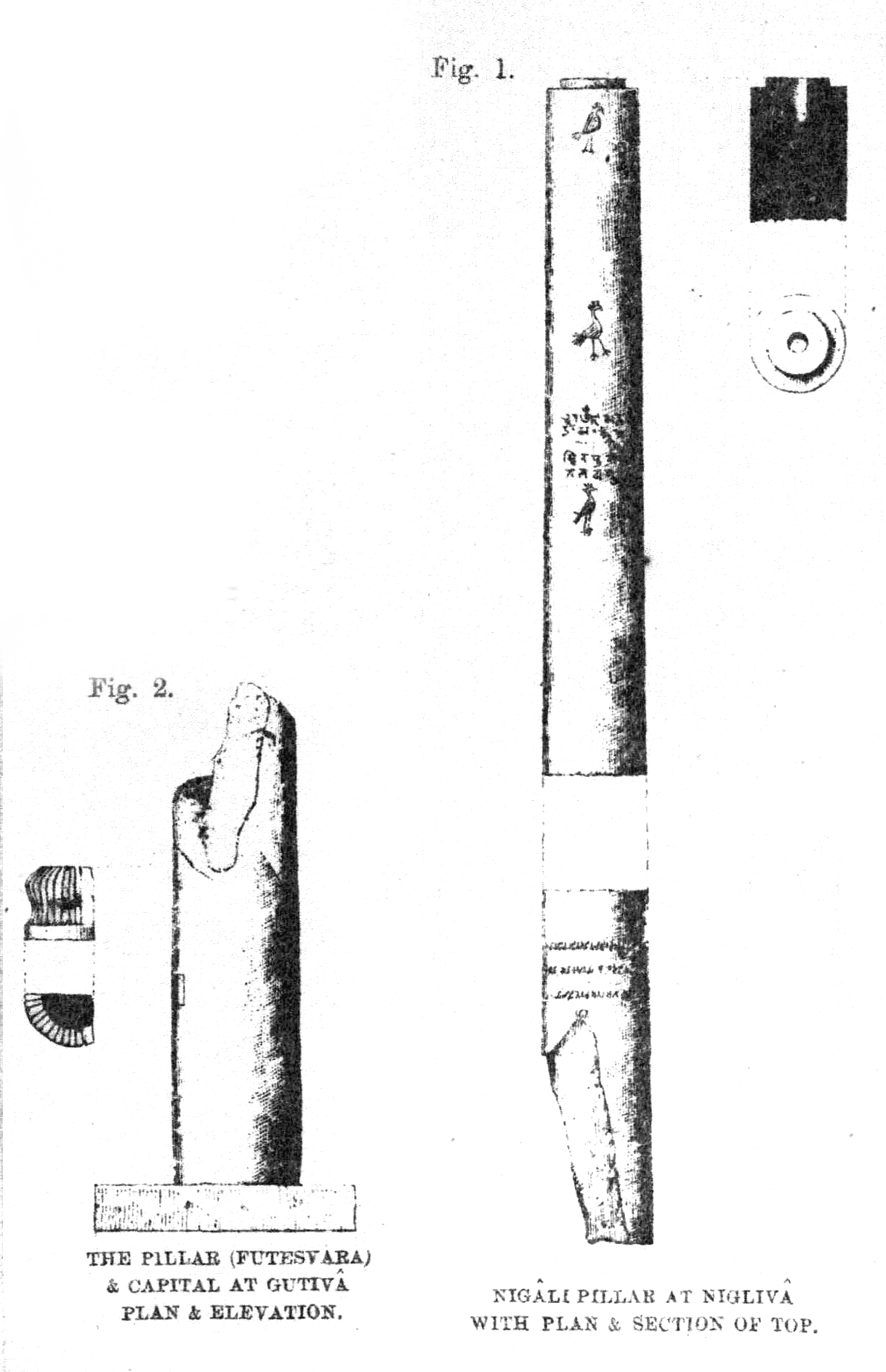Gotihawa on:
[Wikipedia]
[Google]
[Amazon]
Gotihawa (formerly called Gutivā in Western sources) is a village development committee located about southeast of Kapilavastu, in

Excavations at Gotihawa. A Note on the Results Obtained during the First Excavation Campaign in Winter 1994-95
Ancient Nepal, pp. 180–205 Populated places in Kapilvastu District Buddhist pilgrimage sites in Nepal Archaeological sites in Nepal {{Kapilvastu-geo-stub
Kapilvastu District
Kapilvastu district ( ne, कपिलवस्तु जिल्ला ), often Kapilbastu, is one of the districts of Lumbini Province, Nepal. The district, with Kapilbastu municipality as its district headquarters, covers an area of and in ...
, in the Lumbini Zone
Lumbini ( ne, लुम्बिनी अञ्चल) was one of the fourteen zones of Nepal until the restructure of zones to provinces. It is home to the Lumbini site, the birthplace of Siddhartha Gautama, who later became the historical Budd ...
of southern Nepal
Nepal (; ne, नेपाल ), formerly the Federal Democratic Republic of Nepal ( ne,
सङ्घीय लोकतान्त्रिक गणतन्त्र नेपाल ), is a landlocked country in South Asia. It is mai ...
. At the time of the 1991 Nepal census
The 1991 Nepal census was a widespread national census conducted by the Nepal Central Bureau of Statistics.
Working with Nepal's Village Development Committees at a district level,
they recorded data from all the main towns and villages of each ...
it had a population of 3,335 people living in 567 individual households.
History
Modern-day Gotihawa was known as Khemavati in ancient times. According toTheravāda
''Theravāda'' () ( si, ථේරවාදය, my, ထေရဝါဒ, th, เถรวาท, km, ថេរវាទ, lo, ເຖຣະວາດ, pi, , ) is the most commonly accepted name of Buddhism's oldest existing school. The school' ...
Buddhist
Buddhism ( , ), also known as Buddha Dharma and Dharmavinaya (), is an Indian religion or philosophical tradition based on teachings attributed to the Buddha. It originated in northern India as a -movement in the 5th century BCE, and ...
tradition, Kakusandha Buddha
Kakusandha (Pāli), or Krakucchaṃda in Sanskrit, is one of the ancient Buddhas whose biography is chronicled in chapter 22 of the '' Buddhavaṃsa'', one of the books of the Pali Canon.
According to Theravāda Buddhist tradition, Kakusandha is t ...
was born in Khemavati. Kakusandha Buddha is one of the ancient Buddhas whose biography is chronicled in chapter 22 of the '' Buddhavamsa'', one of the books of the Pāli Canon
The Pāli Canon is the standard collection of scriptures in the Theravada Buddhist tradition, as preserved in the Pāli language. It is the most complete extant early Buddhist canon. It derives mainly from the Tamrashatiya school.
During th ...
.
The base of a Pillar of Ashoka
The pillars of Ashoka are a series of monolithic columns dispersed throughout the Indian subcontinent, erected or at least inscribed with edicts by the Mauryan Emperor Ashoka during his reign from c. 268 to 232 BCE. Ashoka used the expressi ...
has been discovered at Gotihawa, and it has been suggested that it is the original base of the Nigali Sagar
Nigali Sagar (also called Nigliva, Nigali Sagar pillar, Nighihawa pillar, Nigliva pillar, or Araurakot pillar) is an archaeological site in Nepal containing the remains of a pillar of Ashoka. The site is located in Nigalihawa, about 20 kilometers ...
pillar fragments, found a few miles away, which contain an inscription of Ashoka
Ashoka (, ; also ''Asoka''; 304 – 232 BCE), popularly known as Ashoka the Great, was the third emperor of the Maurya Empire of Indian subcontinent during to 232 BCE. His empire covered a large part of the Indian subcontinent, ...
(3rd century BCE).

References
Further reading
*Verardi, G. (1998)Excavations at Gotihawa. A Note on the Results Obtained during the First Excavation Campaign in Winter 1994-95
Ancient Nepal, pp. 180–205 Populated places in Kapilvastu District Buddhist pilgrimage sites in Nepal Archaeological sites in Nepal {{Kapilvastu-geo-stub